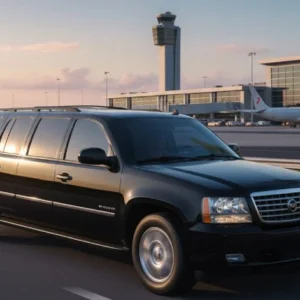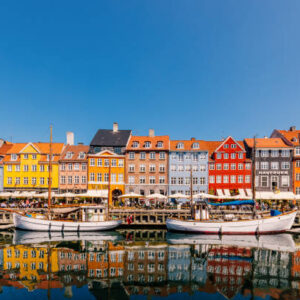The question of Which is Better Ryanair or Easyjet is a perennial debate among European travelers, and the answer is rarely straightforward. It hinges entirely on personal priorities: Is the absolute lowest fare the only goal, or do factors like airport convenience, flexibility, and a less abrasive customer experience hold value? Ryanair and EasyJet, while both pillars of the low-cost model, have evolved distinct identities and strategies. Choosing between them is not merely selecting an airline; it is choosing a travel philosophy.
To understand the core of this debate, one must start with the business models. Ryanair is the undisputed champion of the Ultra-Low-Cost Carrier (ULCC). Its mission is to offer the lowest possible base fare, ruthlessly stripping out every non-essential cost. This philosophy permeates every aspect of its operation, from its aggressive digital-first, no-phone-support policy to its frequent use of secondary airports located far from city centers, such as Paris Beauvais (BVA) or Frankfurt Hahn (HHN). Ryanair’s à la carte pricing is extreme; the base fare covers little more than a small personal item. Checked bags, carry-on luggage larger than a purse, seat selection, priority boarding, and even a bottle of water come with additional fees that can quickly inflate the final price. This model is designed for the highly price-sensitive traveler who is willing to endure rigidity and inconvenience for savings.
EasyJet, by contrast, positions itself as a “Value-Based” Low-Cost Carrier. While still fiercely competitive on price, its model is slightly less austere. A critical differentiator is that its standard fare includes a small overhead cabin bag in addition to the under-seat personal item. This single inclusion addresses a major pain point of the Ryanair experience. Furthermore, EasyJet predominantly operates from primary, major airports—London Gatwick (LGW), Paris Charles de Gaulle (CDG), Amsterdam Schiphol (AMS)—which often means shorter and cheaper ground transfers to the city center. This strategic choice inherently makes EasyJet more appealing to business travelers and leisure passengers who value their time and convenience. The feeling is less “no-frills” and more “streamlined.”
The network and route structures of the two airlines further illuminate their differing targets. Ryanair is a behemoth, operating the largest network in Europe by passenger volume, with over 240 destinations. Its strategy is one of immense scale and frequency, often connecting secondary airports across the continent. This is ideal for travelers whose origin and destination align with these airports, offering unparalleled direct, point-to-point options. EasyJet’s network, while still vast, is more focused on connecting major cities and popular leisure destinations. It has established strong bases at key airports, creating mini-hubs that facilitate smoother connections (though it remains a point-to-point airline). For a traveler flying from a major city to another major city, EasyJet’s network is often more logically convenient.
The onboard experience, while basic on both carriers, has subtle but noticeable differences. Ryanair’s cabins are famously Spartan. The seats are slimline with minimal padding and legroom, and the atmosphere is unapologetically utilitarian. The infamous upselling continues in the air, with announcements pushing scratch cards, perfumes, and snacks. EasyJet’s cabins feel marginally more polished. The seats, while still budget-airline spec, are often perceived as slightly more comfortable, and the general ambiance is less commercial during the flight. Both airlines offer buy-on-board food and drink, with neither having an advantage in quality or price. For a one-hour flight, the difference may be negligible, but on a longer two-to-three-hour sector, the less aggressive cabin environment on EasyJet can be a welcome relief.
When things go wrong, the customer service approaches diverge significantly, though neither is renowned for lavish care. Ryanair’s service structure is its most criticized aspect. The lack of a free phone line and a reliance on web forms can make resolving complex issues like flight cancellations or refund claims a protracted and frustrating process. Their policies are rigidly enforced. EasyJet, while far from perfect, generally provides a more accessible and less combative customer service experience. The presence of a customer service phone line (though it may have charges) and a more responsive social media team can make a tangible difference during travel disruptions. This is a crucial consideration for travelers who value a potential safety net.
Ultimately, the choice is a classic trade-off between Cost and Convenience.
Choose Ryanair if:
Your sole, overriding priority is securing the absolute cheapest possible base fare.
You are traveling with minimal luggage (just a small personal item).
You are confident in the self-service digital process and won’t need to make changes.
The secondary airports it serves are convenient for your start and end points.
You are resilient to rigid policies and an aggressively no-frills atmosphere.
Choose EasyJet if:
You are willing to pay a slight premium (often €10-€30) for a less stressful experience.
You need to bring a small carry-on bag and want it included in your fare.
You value the time and cost savings of flying into a primary, well-connected airport.
You want the peace of mind of slightly more accessible customer service.
You prefer a marginally more comfortable cabin environment.
In conclusion, neither airline is objectively “better”; they are optimized for different customer profiles. Ryanair is a razor-sharp tool for minimizing travel costs with surgical precision, demanding adaptability from its passengers. EasyJet is a more polished instrument that offers a less abrasive journey at a competitively low, though not always the very lowest, price. The savvy European traveler does not pledge loyalty to one but understands the strengths of each, making their choice based on the specific demands of each trip.






